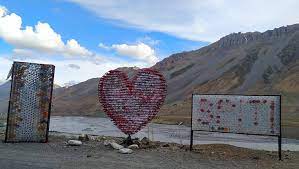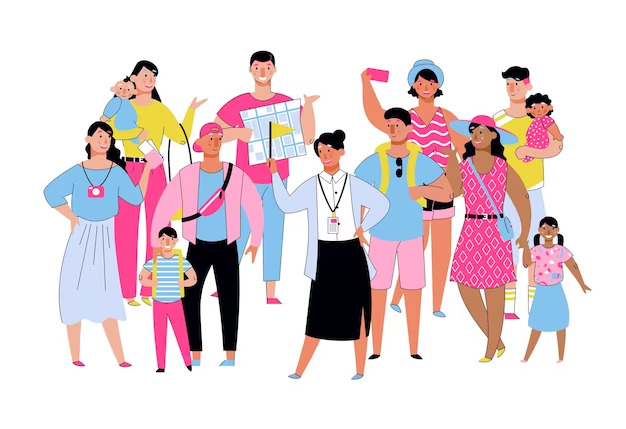Its been amazing how we all are going towards sustainable solutions for the problems in travel and tourism industry. Sustainable Tourism Case Study on unique travel destinations that has been promoting sustainable practices are high in demand. Although, we have faced many problems due to global warming, pollution, diseases, terrorism. The very case of increment of waste especially plastics in any tourism destination hamper not only outlook of the destination but internal environment of the place as well.
For Betterment of the Valley
Spiti Ecosphere is the prominent NGO in Spiti Valley that is working towards helping women to gain their livelihood by indulging them in businesses like home stays, local craft souvenirs making, and as guides. The NGO also works for the the banning of plastic wastes brought in anyway by the visiting tourists and residents. the below Sustainable Tourism Case Study shows how the organization works with numerous communities, bloggers, social media influencers, and localities. Social media influencers like famous traveler Shivya Nath actively participated in Plastic free campaign.
Let’s get indulged into the whole scenario of the campaign
India and Tibet are the two nations that border the Spiti Valley. Although the valley is in India, it is well known for the ancient Buddhist monasteries that the Tibetan saint, the Dalai Lama, frequents especially Tabo Monastry.
One of the main draws for tourists to the valley is Chandratal Lake, sometimes referred to as Moon Lake. The valley has seen a surge in both local and foreign tourists in recent years, most of whom are backpackers. There were 132,983 visitors to the Spiti Valley in total in 2019—both domestic and foreign visitors. This has given the neighborhood’s residents a different way to make money by enabling them to operate mall enterprises like cafés, as well as house stays.
Travelers come to the valley for astronomy, hiking, camping, and the excitement of mailing postcards from the highest post office in the world.
Toxic Plastification in Valley– Unsustainable Practices
The Spiti Valley has been a popular tourism destination for both locals and foreign visitors, resulting in increased visits over time. Increased tourism has led to issues such as overpopulation, pollution, and improper disposal of plastic garbage. According to Agnihotri and Palsapure (2014), about 0.3 million beverage containers are discarded in the valley during the tourist season, which lasts from July to September.
Instead of consuming filtered Himalayan water, plastic bottles marketed in the region contain chemically treated water from India’s plains before being delivered to the valley. Bottled water has several negative consequences on individuals. BPA (bisphenol A) can seep out of plastic bottles when exposed to sunshine during transit. This causes water intoxication. Bottled water has less oxygen and plastic takes years to degrade after disposal.
The issue is made more complicated by the excessive consumption of resources, such as water, caused by the large number of visitors during the peak tourism season. This exacerbates the loss of natural resources and the equilibrium of the ecosystem.
RECYCLING PLASTIC AS WARNING DECOR- Sustainable Tourism Case Study
The NGO Spiti Ecosphere suggested erecting life-size I Love Spiti artwork next to the valley’s entrance gate in collaboration with locals, travel influencer Shivya Nath, Instagrammer Aakash Ranison, photographer Saurabh Narang, artist Michael Hickenberg, and others. The unexpected element was that discarded plastic bottles would be used to create the artwork.
More Case Studies on Sustainable Tourism

I Love Spiti Campaign made through Single Use Plastics (Sustainable Tourism Case Study)
Later, the art work was developed and finished using discarded plastic bottles. Locals, visitors, travel influencers, and companies have all endorsed the proposed art piece. Together, they put up the life-size artwork close to Kaza so that visitors could see it and the message it sent. The art work was thoughtfully positioned so that visitors could see it as soon as they reached in the Valley, which is where the riverfront trash that has been discarded in plastic is also apparent. The purpose of this is to spread the word about the need to outlaw or use less plastic containers and other plastic products.
Sustainable Outcome
Collaboration among stakeholders is essential for ensuring sustainability in today’s destinations. The Prohibiting of Single-Use Plastic movement in the Spiti Valley demonstrates the need to involve stakeholders, including visitors and the local population, to achieve a good cause.
This instilled a sense of ownership for the place and its environment, allowing them to keep on enjoying it. To address issues such as pollution and plastic consumption, it is important to engage cooperatively and aggressively to encourage innovation in destination safety and hygiene.



